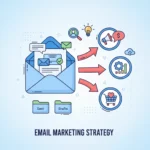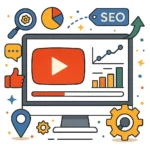Now Reading: 21 Most Important On-Page SEO Factors That Drive Organic Traffic Success
-
01
21 Most Important On-Page SEO Factors That Drive Organic Traffic Success
21 Most Important On-Page SEO Factors That Drive Organic Traffic Success

On-page SEO is the foundation of any successful digital marketing strategy, directly influencing how well your website ranks in search engine results pages (SERPs). Unlike off-page techniques that focus on external signals, on-page SEO gives you direct control over elements that can significantly impact your visibility and traffic.
In this comprehensive guide, we’ll explore the most important on-page SEO factors that can transform your website’s performance. These insights will provide you with actionable strategies to implement immediately.
Key Takeaways:
- Content quality and relevance remain the most critical on-page SEO factors in 2025, focusing on comprehensive coverage that matches user intent
- Strategic keyword optimization in titles, headings, and body content significantly impacts rankings when implemented naturally
- Technical elements like page speed, mobile-friendliness, and schema markup are increasingly important ranking signals
- User experience factors including readability, navigation, and engagement metrics directly influence search performance
- E-E-A-T principles (Experience, Expertise, Authoritativeness, Trustworthiness) are essential for establishing credibility with both users and search engines
Understanding On-Page SEO Fundamentals
Before diving into specific factors, it’s essential to understand what on-page SEO actually encompasses. On-page SEO refers to all the measures you can take directly within your website to improve its position in search rankings. Unlike off-page SEO, which involves external signals like backlinks, on-page optimization gives you complete control over the elements that influence your search visibility.
On-page SEO is important because it helps search engines like Google understand your website’s content and determine its relevance to user queries. When implemented correctly, these optimizations make it easier for search engines to crawl, index, and rank your pages, ultimately driving more targeted organic traffic to your site.
While both on-page and off-page SEO are crucial for a comprehensive strategy, on-page factors provide the foundation upon which all other optimization efforts are built. Without proper on-page SEO, even the strongest backlink profile may fail to deliver the rankings you desire.
Content Quality And Relevance
Aligning With Search Intent
The most fundamental on-page SEO factor is creating content that aligns perfectly with search intent. Google prioritizes relevance above all else, aiming to deliver results that best answer users’ queries. To identify user search intent, analyze the top-ranking search results for your target keywords and identify:
- Content type: Is it a blog post, product page, category page, landing page, or video?
- Content angle: What unique selling point do top-ranking pages emphasize (e.g., “best,” “cheapest,” “for beginners”)?
- Content format: Are users looking for how-to guides, step-by-step tutorials, listicles, comparisons, or reviews?
Understanding these elements allows you to create content that precisely matches what users are searching for, significantly increasing your chances of ranking well.
Comprehensive Content Coverage
In 2025, thin content simply doesn’t cut it anymore. Search engines favor in-depth, comprehensive content that thoroughly covers a topic from multiple angles. This doesn’t necessarily mean longer content is always better, but rather that your content should address all relevant aspects of a topic that users might be interested in.
To create comprehensive content:
- Research all related questions and subtopics using tools like Answer the Public or Google’s “People Also Ask” feature
- Include relevant statistics, examples, and case studies to support your points
- Address potential objections or questions readers might have
- Use multimedia elements like images, videos, and infographics to enhance understanding
Remember that comprehensive content not only ranks better but also positions you as an authority in your field, building trust with both search engines and users.
Useful Articles:
Keyword Optimization Strategies
Strategic Keyword Placement
While keyword stuffing is long dead, strategic keyword placement remains one of the most important on-page SEO factors. Here are the critical locations where your target keywords should appear:
- Page title: Include your main keyword in the title as naturally as possible
- First 100 words: Mention your target keyword early in your content
- Headings: Use keywords in H1, H2, and H3 tags to signal topic relevance
- Title tag: Optimize your SEO title with the primary keyword
- Meta description: Include keywords in your meta description to improve click-through rates
- Image file names and alt text: Name images descriptively and include relevant keywords in alt text
- URL structure: Create clean, keyword-rich URLs that accurately describe the page content
The key is to incorporate keywords naturally without forcing them where they don’t belong. Search engines have become sophisticated at detecting keyword stuffing and will penalize content that appears manipulative.
Semantic Keywords And LSI
Beyond your primary keywords, incorporating semantic keywords and Latent Semantic Indexing (LSI) terms has become increasingly important for on-page SEO. These related terms help search engines understand the context and relevance of your content.
Semantic keywords are conceptually related to your main target keyword or topic. They help search engines understand the context of your content and improve its relevance to user queries. For example, if your primary keyword is “digital marketing,” semantic keywords might include “online advertising,” “social media marketing,” and “content strategy.”
To find semantic keywords:
- Use Google’s “People Also Ask” feature
- Explore Google’s related searches at the bottom of search results
- Leverage SEO tools like SEMrush, Ahrefs, or Moz
- Analyze competitor content for related terms
- Explore Wikipedia for related concepts
- Study social media conversations around your topic
Incorporating these semantically related terms naturally throughout your content helps establish topical authority and improves your chances of ranking for a wider range of related queries.
Technical On-Page SEO Elements
URL Structure Optimization
Clean, descriptive URLs are an often overlooked yet important on-page SEO factor. A well-structured URL helps both users and search engines understand what a page is about before they even visit it. Best practices for URL optimization include:
- Keep URLs short and descriptive
- Include your target keyword
- Use hyphens to separate words
- Avoid unnecessary parameters or numbers
- Create a logical hierarchy that reflects your site structure
- Remove stop words (a, an, the, etc.) when possible
For example, a URL like “https://example.com/digital-marketing-guide” is much more effective than “https://example.com/?p=123” or “https://example.com/article-posted-on-april-15-about-digital-marketing-strategies-and-tips.”
Page Speed Optimization
Page speed has become one of the most critical on-page SEO factors, directly affecting both rankings and user experience. With Google’s Core Web Vitals now being used as ranking signals, optimizing your site’s loading time is non-negotiable.
To improve page speed:
- Compress and optimize images
- Minimize HTTP requests
- Enable browser caching
- Reduce server response time
- Minify CSS, JavaScript, and HTML
- Use a content delivery network (CDN)
- Implement lazy loading for images and videos
- Reduce plugin usage (for WordPress sites)
Tools like Google PageSpeed Insights can help identify specific issues affecting your site’s performance and provide recommendations for improvement.
Mobile-Friendliness
With mobile-first indexing now the standard, ensuring your site is fully optimized for mobile devices is essential. Mobile-friendliness encompasses:
- Responsive design that adapts to different screen sizes
- Touch-friendly navigation elements
- Readable text without zooming
- Properly sized and spaced buttons and links
- No horizontal scrolling required
- Fast loading times on mobile networks
Google’s Mobile-Friendly Test can help identify any issues with your site’s mobile experience that need addressing.
Meta Tags And Structured Data
Title Tags And Meta Descriptions
Title tags and meta descriptions remain among the most important on-page SEO factors, directly influencing click-through rates from search results. An effective title tag should:
- Be 50-60 characters long
- Include your primary keyword (preferably near the beginning)
- Be compelling and accurately describe the page content
- Include your brand name when possible
- Be unique across your site
Similarly, meta descriptions should:
- Be under 150-160 characters
- Include your target keyword
- Provide a concise summary of what users will find on the page
- Include a call-to-action when appropriate
- Be unique for each page
While meta descriptions aren’t direct ranking factors, well-crafted descriptions can significantly improve click-through rates, which indirectly benefits your SEO performance.
Schema Markup Implementation
Schema markup (structured data) has become increasingly important for on-page SEO, helping search engines understand your content and potentially earning rich snippets in search results. Common types of schema markup include:
- Review schema for products or services
- FAQ schema for frequently asked questions
- How-to schema for instructional content
- Product schema for e-commerce pages
- Event schema for upcoming events
- Recipe schema for cooking instructions
- Article schema for news or blog content
Implementing the appropriate schema markup can increase your visibility in search results and provide users with more information before they click, improving click-through rates for relevant searches.
Useful Articles:
Content Structure And Formatting
Header Tags Hierarchy
Proper use of header tags (H1, H2, H3, etc.) is crucial for both SEO and user experience. These tags create a hierarchical structure that helps search engines understand the organization and importance of different sections of your content.
Best practices for header tags include:
- Use only one H1 tag per page (typically the main title)
- Include keywords in H2 and H3 tags where natural
- Create a logical hierarchy (H1 → H2 → H3, etc.)
- Keep headers descriptive and concise
- Use headers to break up content into scannable sections
Well-structured headers not only help with SEO but also make your content more accessible to readers who scan rather than read every word.
Readability And User Experience
Content readability has become an increasingly important on-page SEO factor as search engines aim to deliver the best possible user experience. Readable content:
- Uses short paragraphs (3-4 sentences maximum)
- Incorporates bulleted and numbered lists where appropriate
- Features subheadings to break up text
- Includes white space for visual breathing room
- Uses simple language appropriate for your audience
- Maintains a conversational tone
- Incorporates transition sentences between sections
Tools like Hemingway Editor can help identify readability issues in your content, suggesting ways to make it more accessible to your target audience.
Multimedia Optimization
Image Optimization
Images play a crucial role in on-page SEO, affecting both user engagement and page performance. Properly optimized images:
- Have descriptive, keyword-rich file names (e.g., “digital-marketing-strategy-diagram.jpg” rather than “IMG001.jpg”)
- Include relevant alt text that describes the image and incorporates keywords naturally
- Are compressed to minimize file size without sacrificing quality
- Use appropriate file formats (JPEG for photographs, PNG for graphics with transparency, WebP for best compression)
- Are responsive and display properly on all devices
Image optimization not only improves page speed but also creates opportunities to rank in image search results, driving additional traffic to your site.
Video Content Integration
Incorporating video content has become an increasingly important on-page SEO factor, with pages featuring videos often enjoying higher engagement metrics and better rankings. To optimize video content:
- Host videos on your own domain when possible, or use YouTube with proper embedding
- Create descriptive, keyword-rich titles and descriptions
- Add transcripts or closed captions to make content accessible and indexable
- Use schema markup to help search engines understand video content
- Optimize thumbnail images to encourage clicks
- Keep videos relevant to the page content and user intent
Videos can significantly increase time on page and reduce bounce rates, sending positive signals to search engines about your content’s quality and relevance.
Internal Linking Structure
Strategic Link Placement
Internal linking is one of the most underrated yet important on-page SEO factors. A well-planned internal linking strategy:
- Helps search engines discover and index new pages
- Distributes page authority throughout your site
- Establishes content hierarchy and topic relationships
- Improves user navigation and engagement
- Increases time on site and pages per session
When implementing internal links:
- Use descriptive, keyword-rich anchor text
- Link to relevant, high-value content
- Create a logical site structure with breadcrumb navigation
- Ensure all important pages are no more than 3-4 clicks from the homepage
- Regularly audit and update internal links as content changes
A thoughtful internal linking strategy not only improves SEO but also enhances the overall user experience by guiding visitors to related content they might find valuable.
Anchor Text Optimization
The anchor text you use for internal links provides important context to both users and search engines about the linked page’s content. Best practices for anchor text optimization include:
- Use descriptive, relevant text that accurately reflects the linked page’s content
- Include keywords naturally, but avoid over-optimization
- Vary anchor text for links pointing to the same page
- Avoid generic phrases like “click here” or “read more”
- Keep anchor text concise and specific
Well-optimized anchor text improves user navigation while sending clear topical signals to search engines about your content’s relevance and relationships.
Useful Articles:
User Engagement Metrics
Dwell Time And Bounce Rate
User engagement metrics like dwell time (how long visitors stay on your page) and bounce rate (percentage of visitors who leave without interacting) have become increasingly important on-page SEO factors. While Google doesn’t directly confirm these as ranking factors, there’s strong evidence that they influence search performance.
To improve these metrics:
- Create compelling, valuable content that answers users’ questions
- Start with a strong hook that captures attention immediately
- Use visual elements to break up text and maintain interest
- Include interactive elements like quizzes, calculators, or polls
- Ensure fast loading times to prevent early abandonment
- Optimize for mobile users who may have different browsing behaviors
Pages that keep users engaged send positive signals to search engines about content quality and relevance, potentially improving rankings over time.
Click-Through Rate Optimization
Your click-through rate (CTR) from search results can indirectly impact your rankings, making it an important on-page SEO consideration. To optimize CTR:
- Create compelling, benefit-driven title tags
- Write meta descriptions that generate curiosity or highlight unique value
- Implement schema markup for rich snippets that stand out in search results
- Include numbers, questions, or emotional triggers in titles
- Add the current year to titles for time-sensitive content
- Test different title and description variations to identify what resonates with your audience
Higher CTRs signal to search engines that your content is relevant and valuable to users searching for particular keywords, potentially leading to ranking improvements over time.
E-E-A-T Principles Implementation
Demonstrating Expertise And Authority
Experience, Expertise, Authoritativeness, and Trustworthiness (E-E-A-T) have become increasingly important on-page SEO factors, especially for YMYL (Your Money or Your Life) topics related to health, finance, and safety.
To demonstrate expertise and authority:
- Include author bios with relevant credentials and experience
- Link to authoritative sources to support claims
- Cite research, statistics, and studies from reputable organizations
- Showcase relevant certifications, awards, or recognition
- Provide comprehensive, accurate information that demonstrates deep knowledge
- Update content regularly to ensure it remains current and accurate
Establishing yourself as an authoritative source not only improves SEO but also builds trust with your audience, leading to higher engagement and conversion rates.
Trust Signals And Credibility
Building trust is essential for both SEO and user engagement. Important trust signals include:
- Clear contact information and about pages
- Secure website (HTTPS) with proper SSL certification
- Privacy policy and terms of service
- Testimonials, reviews, and case studies
- Media mentions and press coverage
- Industry affiliations and partnerships
- Transparent disclosure of affiliate relationships or sponsored content
These elements signal to both users and search engines that your site is legitimate, trustworthy, and operated by real experts in your field.
Advanced On-Page SEO Techniques
Featured Snippet Optimization
Optimizing for featured snippets (position zero) has become an increasingly important on-page SEO strategy. To increase your chances of earning featured snippets:
- Identify common questions in your niche and answer them concisely
- Structure content with clear headings that match question formats
- Use bulleted or numbered lists for process-based content
- Create tables for comparison data
- Define terms clearly and concisely
- Provide direct, factual answers to specific questions
- Use schema markup to help search engines understand your content format
Featured snippets can dramatically increase visibility and traffic, even if your page isn’t ranking #1 organically for a particular query.
Content Freshness And Updates
Keeping content fresh and updated is an important on-page SEO factor, particularly for topics that evolve quickly. Search engines often favor recently updated content, especially for queries where recency matters.
To maintain content freshness:
- Regularly audit existing content for accuracy and relevance
- Update statistics, examples, and references
- Add new information as industry developments occur
- Refresh images and visual elements
- Update publication dates when significant changes are made
- Remove or redirect outdated content that no longer provides value
Consistently updated content signals to search engines that your site is active and committed to providing current, accurate information to users.
Mastering the most important on-page SEO factors is essential for achieving and maintaining strong search visibility in today’s competitive digital landscape. From creating high-quality, user-focused content to implementing technical optimizations that search engines reward, these elements work together to build a foundation for sustainable organic traffic growth. By systematically implementing the strategies outlined in this guide, you’ll be well-positioned to improve your rankings, attract more qualified visitors, and ultimately achieve your business objectives through search.





















